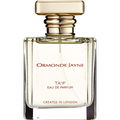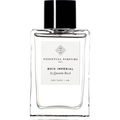06/10/2025

ClaireV
969 Reviews

ClaireV
1
Oakmoss in all its inky, creamy, vegetal splendour
Right away, you are able to tell that Evernia is quite recognizably an Ormonde Jayne take on oakmoss. By which I mean that the oakmoss has been stripped out, pared down, and framed in an elegantly sparse structure featuring several of the brand’s signatures, for example, the fizzy brightness of cardamom and other ghost spices, a peppery-metallic lift in the topnotes, a touch of freesia or peony in the basenotes for that touch of clean rubber sneaker to push back against any creaminess that edges into excess. And Iso E Super? Sure – this is radiant, musky stuff. But that’s all by the by. Because Evernia never lets us get distracted from the oakmoss.
In Evernia, Ormonde Jayne has highlighted the savory aspects of natural oakmoss rather than its more pungent or bitter facets. Though the two perfumes are ultimately very different, the oakmoss in Evernia reminds me very much of the one used in Guerlain’s Vol de Nuit, in that they both have that soft, earthy ‘slow-cooked greens’ element to them that calls to mind the vapors of celery cooked to the point of collapse, clinging to the fibers of one’s angora sweater in a warm, steamy kitchen. While the Guerlain surrounds its oakmoss with heaps of animalic narcissus, piercing bergamot, and that plush Guerlainade of vanilla and balsams, the Ormonde Jayne emphasizes the vegetal savoriness of its oakmoss with a cardamom-tinged musk so buttery that it feels like vaporized Kerrygold.
I’m almost sure that low-atranol oakmoss has been used here rather than a synthetic replacer, but as Thierry Wasser, Master Perfumer of Guerlain, has pointed out, if “you make a fractional distillation and you pull out what the European Commission doesn’t want any more, then you create an olfactive hole. So then you have to find a way of tricking the nose into thinking that it’s smelling real oakmoss. You have to cheat by using other things”. So perhaps the perfumer has leaned on other materials to fill this ‘hole' in Evernia too, something like jasmone (which often smells like a cross between immortelle and celery to me), or a touch of mastic oil to anchor the greenness and weigh it down. It could even be the same supporting cast as seen in Ormonde Woman (or Man), i.e., that greenish, coniferous mélange of cardamom oil, juniper, and hemlock (though Evernia is far less sweet).
Unlike Ormonde Woman, though, Evernia doesn’t end in a gingerbread amber, nor does it wind up in the scratchy oud-wood place occupied by Ormonde Man (though it clearly belongs fits into the ‘core collection’ of Ormonde Jayne, alongside these stalwarts). Instead, Evernia shakes off the deep, earthy-saline creaminess that dominates for much of its life, and takes on the pale, woody sourness of linen washed in rainwater and hung out to dry in a cold, sharp wind. It is metallic and mineralic, the faint ‘freshly-poured-concrete’ scent of cashmeran whipping it dry. Though I’m personally less enamored by the drydown than I am with the first 75% sprawl of Evernia, I recognize that in its absence of sweet amber, creamy sandalwood, or warming resins, the entire scent maintains this cool, modern spareness throughout that makes it an attractive choice for both sexes.
In Evernia, Ormonde Jayne has highlighted the savory aspects of natural oakmoss rather than its more pungent or bitter facets. Though the two perfumes are ultimately very different, the oakmoss in Evernia reminds me very much of the one used in Guerlain’s Vol de Nuit, in that they both have that soft, earthy ‘slow-cooked greens’ element to them that calls to mind the vapors of celery cooked to the point of collapse, clinging to the fibers of one’s angora sweater in a warm, steamy kitchen. While the Guerlain surrounds its oakmoss with heaps of animalic narcissus, piercing bergamot, and that plush Guerlainade of vanilla and balsams, the Ormonde Jayne emphasizes the vegetal savoriness of its oakmoss with a cardamom-tinged musk so buttery that it feels like vaporized Kerrygold.
I’m almost sure that low-atranol oakmoss has been used here rather than a synthetic replacer, but as Thierry Wasser, Master Perfumer of Guerlain, has pointed out, if “you make a fractional distillation and you pull out what the European Commission doesn’t want any more, then you create an olfactive hole. So then you have to find a way of tricking the nose into thinking that it’s smelling real oakmoss. You have to cheat by using other things”. So perhaps the perfumer has leaned on other materials to fill this ‘hole' in Evernia too, something like jasmone (which often smells like a cross between immortelle and celery to me), or a touch of mastic oil to anchor the greenness and weigh it down. It could even be the same supporting cast as seen in Ormonde Woman (or Man), i.e., that greenish, coniferous mélange of cardamom oil, juniper, and hemlock (though Evernia is far less sweet).
Unlike Ormonde Woman, though, Evernia doesn’t end in a gingerbread amber, nor does it wind up in the scratchy oud-wood place occupied by Ormonde Man (though it clearly belongs fits into the ‘core collection’ of Ormonde Jayne, alongside these stalwarts). Instead, Evernia shakes off the deep, earthy-saline creaminess that dominates for much of its life, and takes on the pale, woody sourness of linen washed in rainwater and hung out to dry in a cold, sharp wind. It is metallic and mineralic, the faint ‘freshly-poured-concrete’ scent of cashmeran whipping it dry. Though I’m personally less enamored by the drydown than I am with the first 75% sprawl of Evernia, I recognize that in its absence of sweet amber, creamy sandalwood, or warming resins, the entire scent maintains this cool, modern spareness throughout that makes it an attractive choice for both sexes.





 Top Notes
Top Notes  Pink pepper
Pink pepper Blackcurrant absolute
Blackcurrant absolute Cardamom
Cardamom Sicilian bergamot
Sicilian bergamot Coriander seed
Coriander seed Heart Notes
Heart Notes  Orris butter
Orris butter Moroccan rose absolute
Moroccan rose absolute Violet
Violet Freesia
Freesia Jasmine
Jasmine Lily of the valley
Lily of the valley Base Notes
Base Notes  ISO-E-Super
ISO-E-Super Cashmeran
Cashmeran Musk
Musk Oakmoss
Oakmoss Opoponax
Opoponax Sandalwood
Sandalwood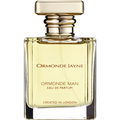
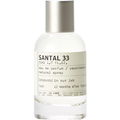


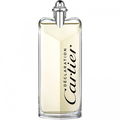









 WoodMoose
WoodMoose OceanCliffs
OceanCliffs Holscentbar
Holscentbar ChicoRoch1
ChicoRoch1 Axiomatic
Axiomatic Ergoproxy
Ergoproxy Eggi37
Eggi37 Profumo
Profumo Heikeso
Heikeso Augusto
Augusto













